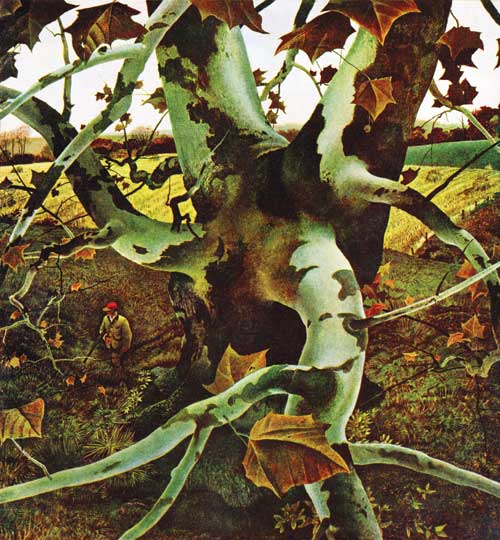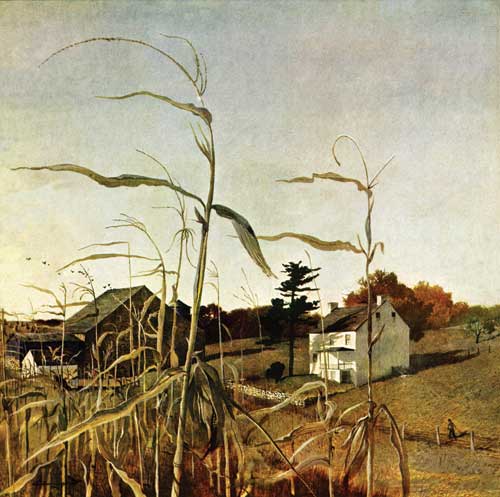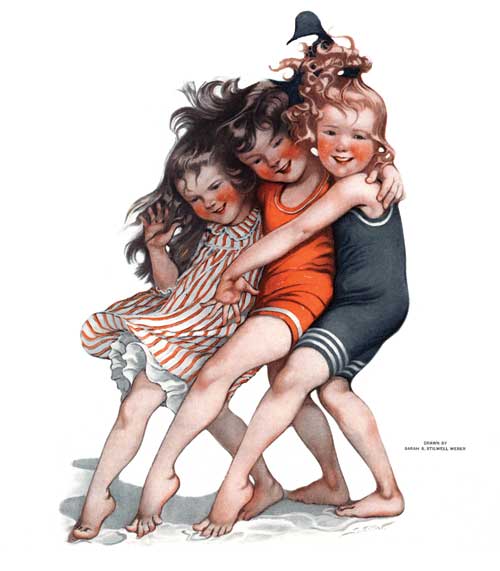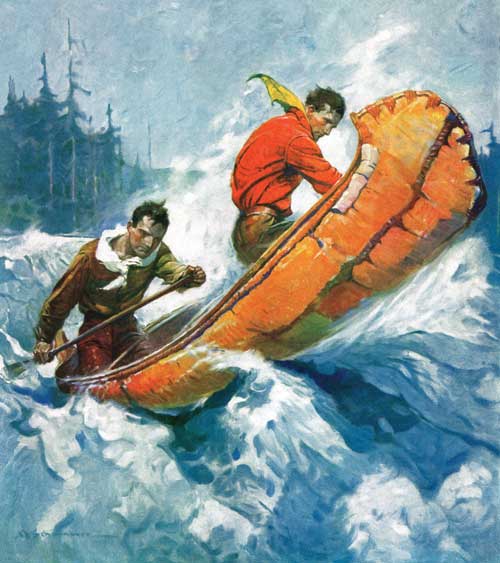Gallery from the Archive: The Brandywine School
Art, American-style
In 1900, frustrated with formal art instruction, renowned illustrator Howard Pyle opened his own art school in the Brandywine Valley. Rather than teach technique, he encouraged students to capture a moment and bring it to life. His teachings would influence such greats as Maxfield Parrish and Norman Rockwell.

Andrew Wyeth
The Saturday Evening Post
October 16, 1943
The Wyeth Family
Pyle accepted only the most promising students. One of his most well-known was N.C. Wyeth, who enrolled in 1902 and who shared Pyle’s fascination with the landscape and history of America. Wyeth soon became a celebrity in his own right, painting several of the greatest early covers for the Post and, later, for The Country Gentleman. His work is known for its vibrant color and frequent high drama.

N.C. Wyeth
The Country Gentleman
June 1, 1944
N.C. Wyeth’s son Andrew, too, was inspired by the realism of the Brandywine School. But unlike his father, Andrew was a reserved and subtle artist who restricted himself to a limited color palette. Although he frequently painted landscapes like the one below, he described himself as an abstractionist.

Andrew Wyeth
The Country Gentleman
October 1, 1950
A Woman’s Place
In Pyle’s time, a career as an artist was not generally considered suitable for women. In a bold challenge to the art establishment, Pyle admitted as many women as men to his school. Several of his alumnae would become quite successful, including Sarah Stilwell-Weber and Katherine R. Wireman, both of whom contributed regularly to the Post.

Sarah Stilwel-Weber
The Saturday Evening Post
August 25, 1917

Katherine R. Wireman
The Saturday Evening Post
June 28, 1924
Down to the Sea
Anton Otto Fischer came to Brandywine after serving as a deckhand for three years. Under Pyle, he learned to apply his nautical experience to vivid seascapes like the one below.

Anton Otto Fischer
The Saturday Evening Post
September 20, 1930
Frank E. Schoonover’s early work was influenced by Pyle’s paintings of knights and pirates, but he soon developed his own style. He is remembered today for scenes of action and romance, frequently set in the wilderness.

Frank E. Schoonover
The Country Gentleman
March 1, 1930